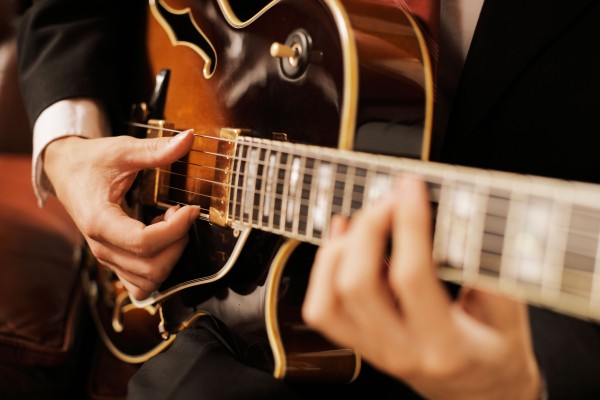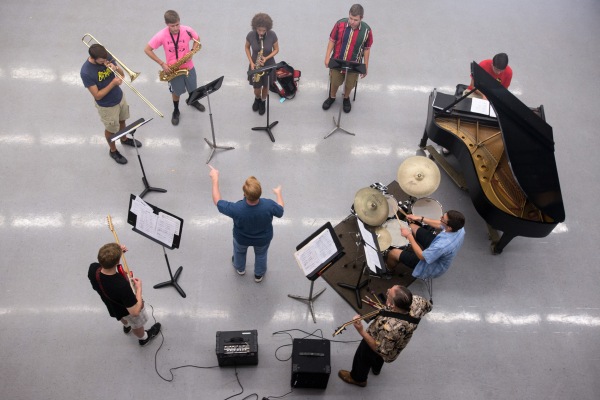Major Scale Enclosure Exercise in All Keys [PDF]
Here’s a great exercise I picked up from saxophonist Mike Titlebaum. His video “Improvisation Using Simple Melodic Embellishment,” a jazz clinic by Mike Titlebaum has lots of great concepts worth you time. Check out the video at about the 11:11 for a more complete explanation of the technique this exercise is built on.
The 3-note enclosure patterns shown leading up to each circled note are commonly heard embellishments in bebop playing and are applied here to each note of a major scale. I’ve notated it here in all keys with guitar tab placing the patterns mostly around the 5th position but once this exercise is mastered you could transpose any of the patterns other places on the fingerboard. Some keys will likely feel more difficult than others. Personally, I feel that the fingerings for the F and Eb major scales are some of the more intuitive and may be a good place to start if this is a new pattern for you. Scales with 5-fret stretches, like the A , D, and G scales here took me a little more time to get under my fingers but as always, YMMV. Probably the most important thing is to internalize the sound of the enclosure patterns and where they fall in the scale and let your fingers follow your ear to find the sounds in each key. In other words, don’t depend on the tablature or designated fingerings too much.
Enjoy the challenge and please let me know if you work through it.


